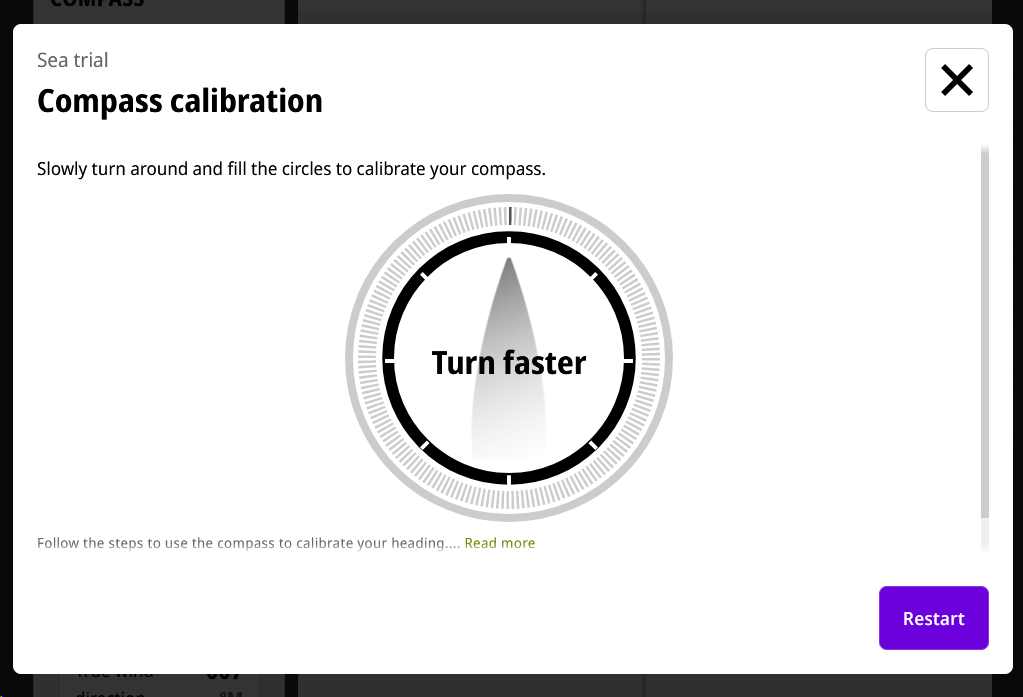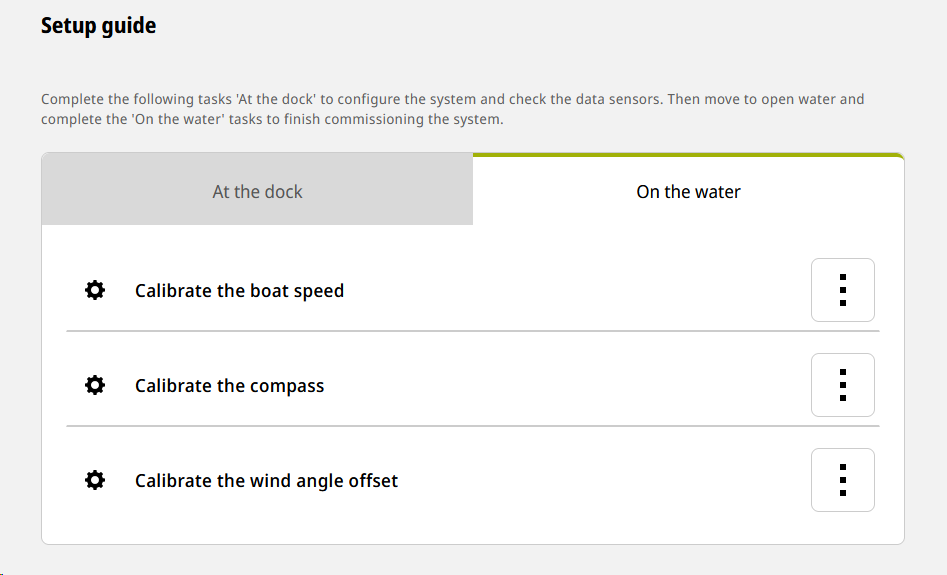
Autocalibration on Triton Edge™
Accurate calibration is the holy grail when it comes to Sailing Instruments. Data that you can trust means you can make better decisions and be fully aware of your surroundings. But historically, getting accurate numbers has been a daunting prospect.
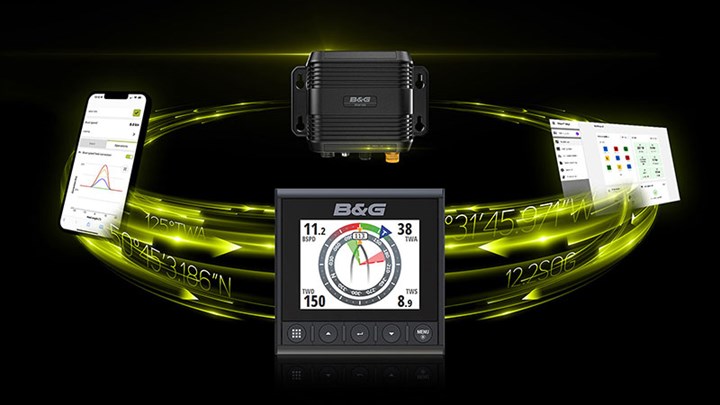
Our new sailing Processors, Triton Edge™, Hercules® and Hercules® WTP, aim to take some of the guesswork out of calibrating your sailing data with advanced auto-calibration routines that will provide you with the best starting point for quality and reliable data. Let’s take a look at how you can calibrate your data using Triton Edge’s easy to use web interface as an example.
To access the calibration menus you can either use a mobile phone, tablet or laptop connected to the Triton Edge’s internal WiFi, or you can use the Sailing processor app on a ZeusS® chartplotter.
Boat Speed
For decades, most boat speed calibration has depended upon the ‘measured mile’, where you choose a set distance for your calibration run on the chart, for instance between two known landmarks, then start and stop calibration as you pass each end of the run, with runs performed up and down tide to cancel out tidal effects. This is a time-honoured way to get a calibration factor, but human error can creep in if the measured distance is not quite right, and it relies on you hitting the start/stop button at the right time on each run.
Our new sailing processors build on this method by using GPS to measure the distance run– you motor your first run and hit ‘done’ when you have finished your run, at any point over 160m. This sets the calibration leg length, and the easy-to-use webserver tells you what heading and boat speed to maintain in order to complete runs 2 and 3, before suggesting a calibration factor at the end of the process.
There is also functionality to tweak the % value, and to set boat speed to a known speed.

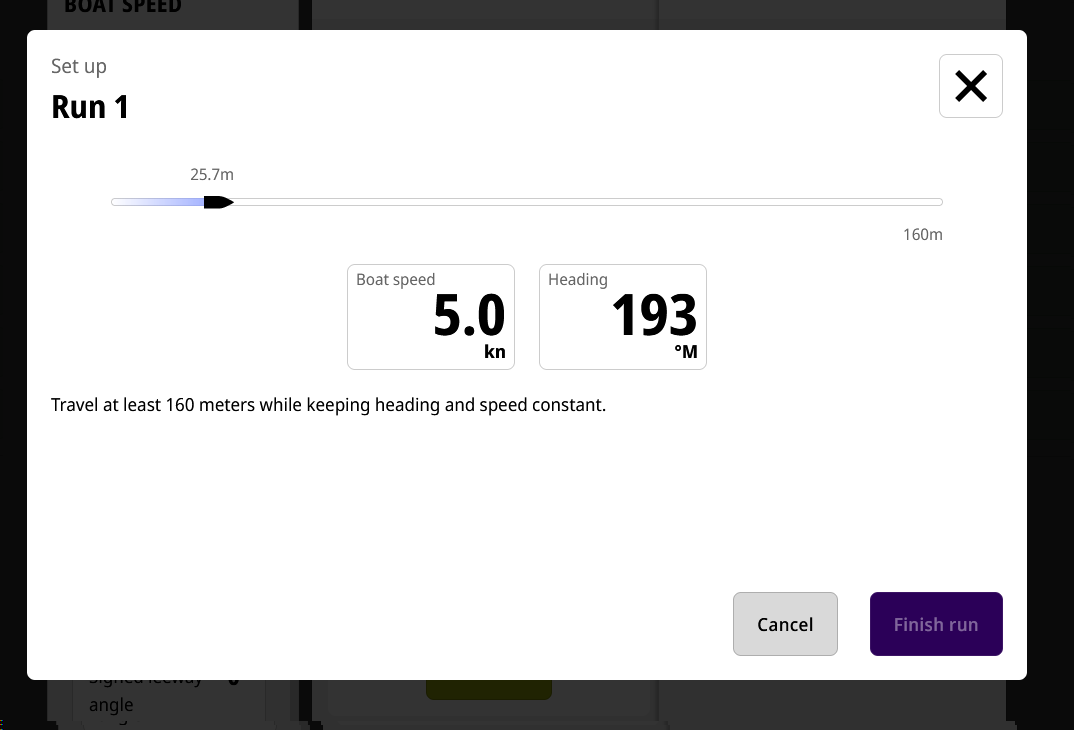
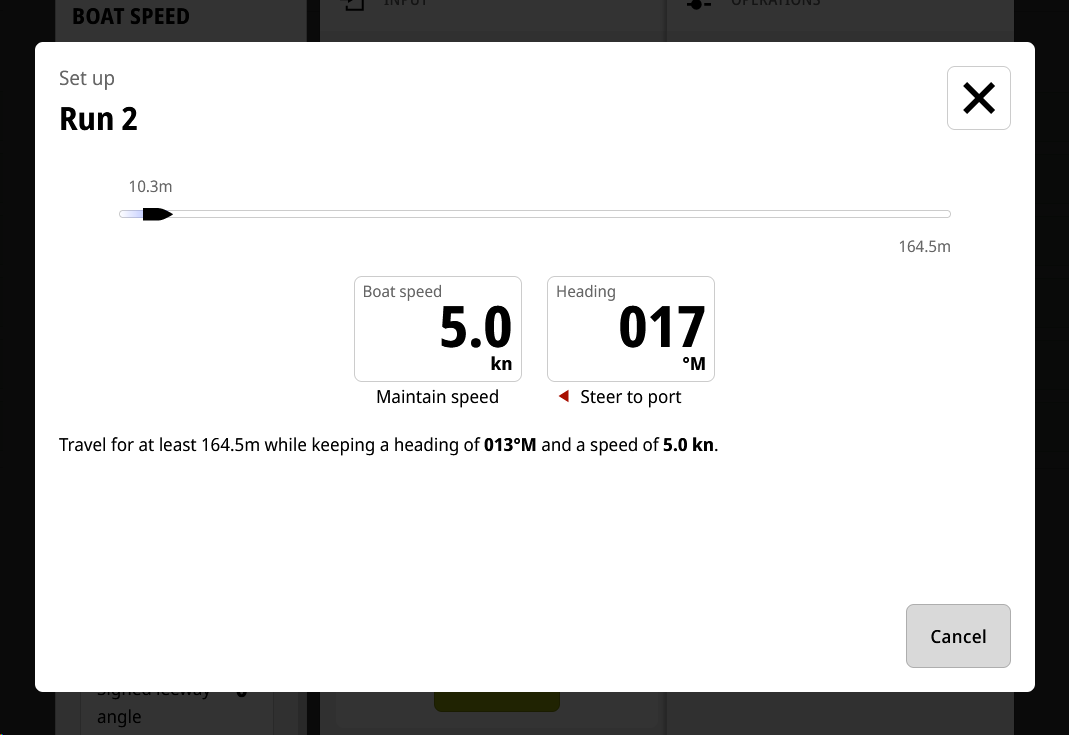
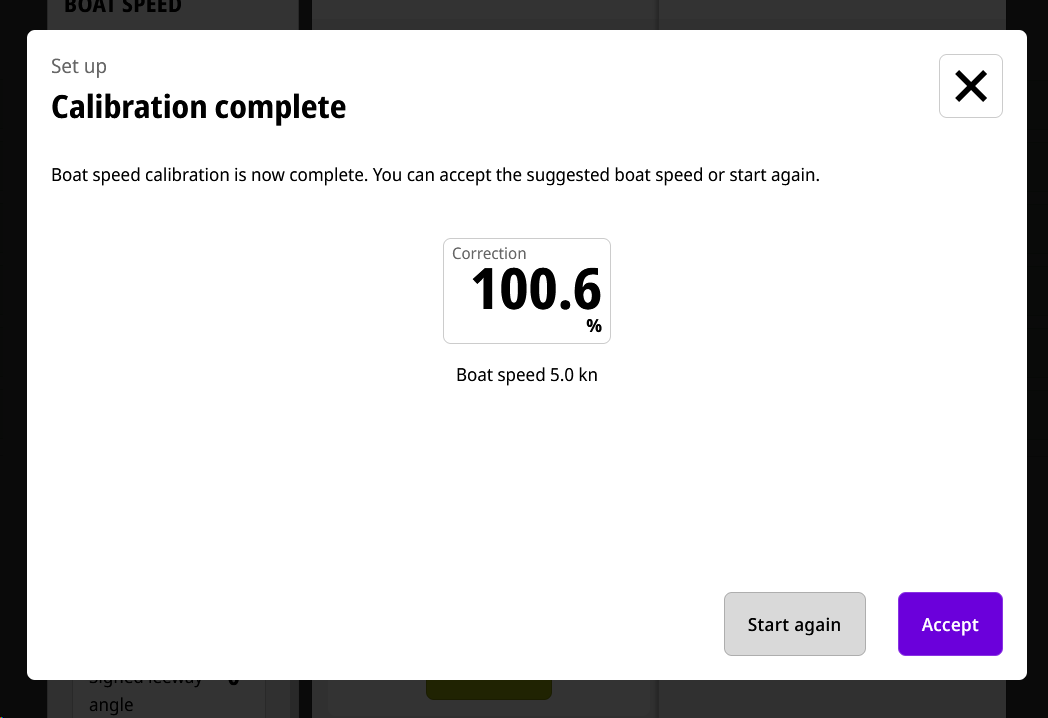
MHU Offset
With boat speed calibrated, the next crucial part of getting accurate instrument data is making sure that your measured wind angle is calibrated to remove any installation offset at the masthead. Triton Edge makes this easy, by offering an autocalibration feature.
You’ll be guided to set the boat up close-hauled and to sail by feel. You then perform at least 2 runs on each tack, after which the processor will offer a calculated offset. Each run is given a steering quality score, based on steady breeze and helming so that you can remove any low-quality runs from the mix. With this complete you should notice your AWA on each tack starts to match.
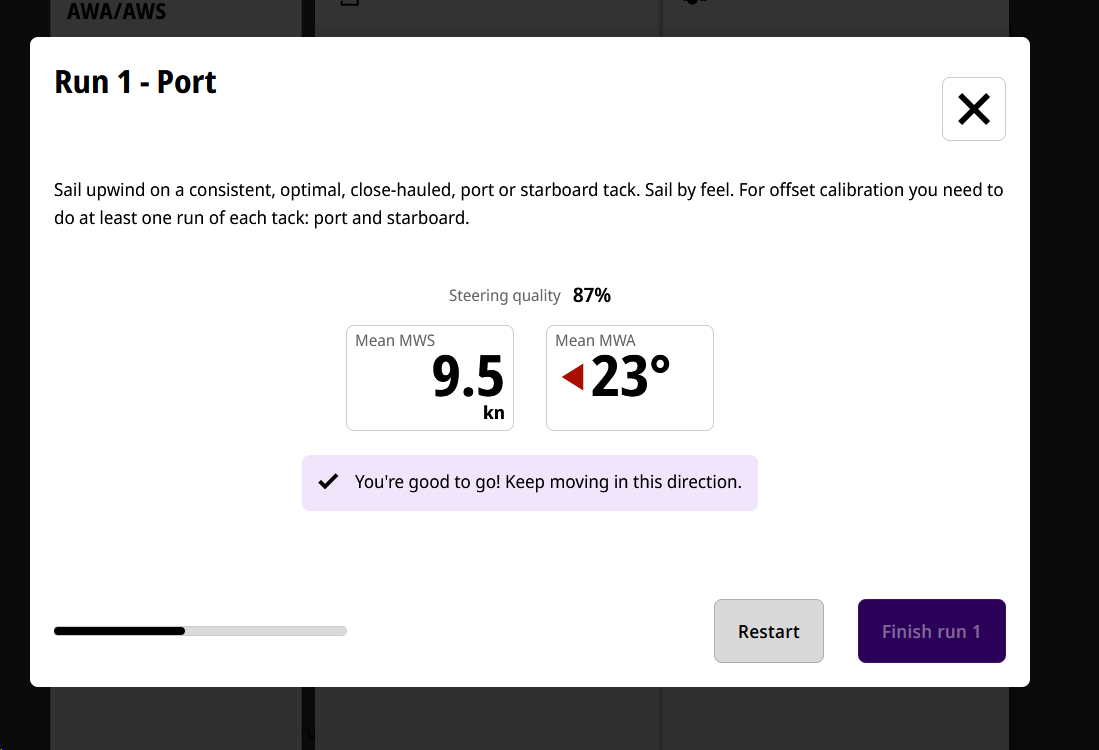
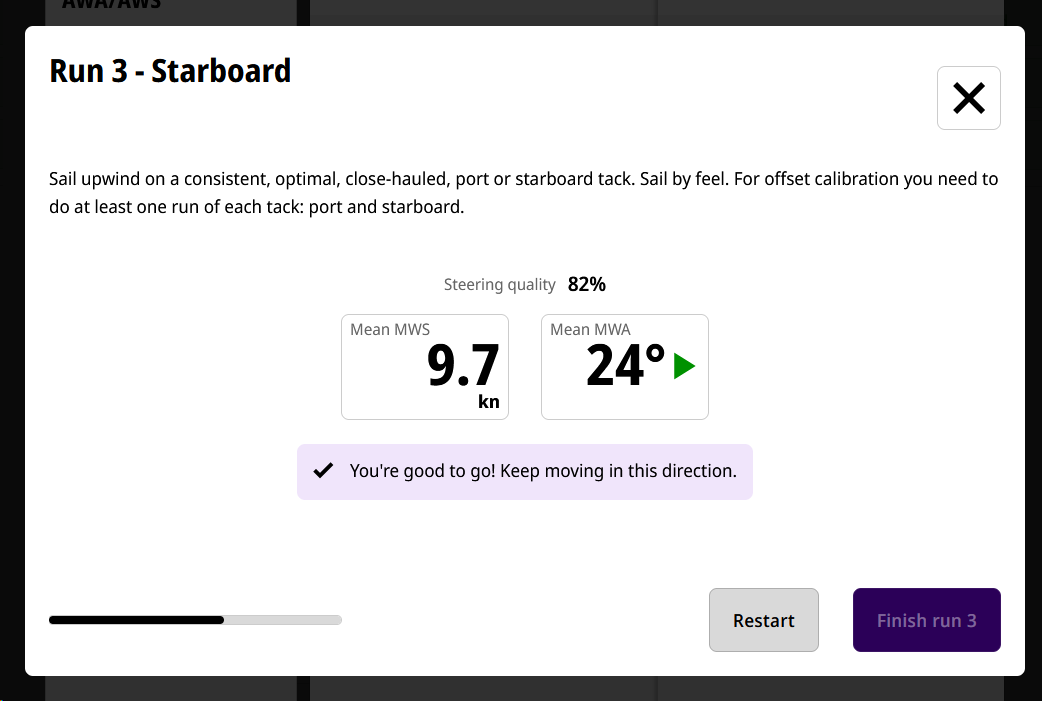
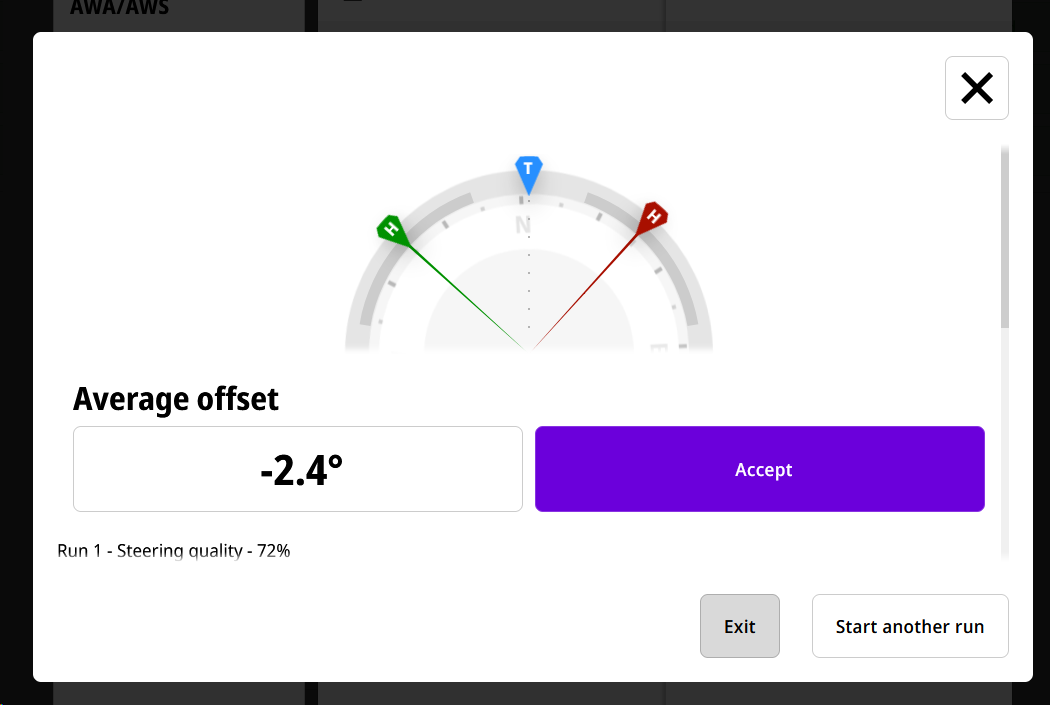
TWA Offset
The next step is to calibrate your TWA offset. This can vary in differing wind speeds and conditions, and is something that will need to be built up over time. When calibrated successfully, you’ll be able to trust your True Wind Direction data and use it to inform your tactical decisions on the race course.
Triton Edge offers an autocal feature – similar to the Measured Wind Angle offset, which guides you to sail upwind on each tack. This time, it will input the results into the correction tables for you for the current wind strength. By performing this quick and easy autocalibration regularly, and in a range of conditions, you can build up an accurate table of TWA corrections across a range of wind speeds.
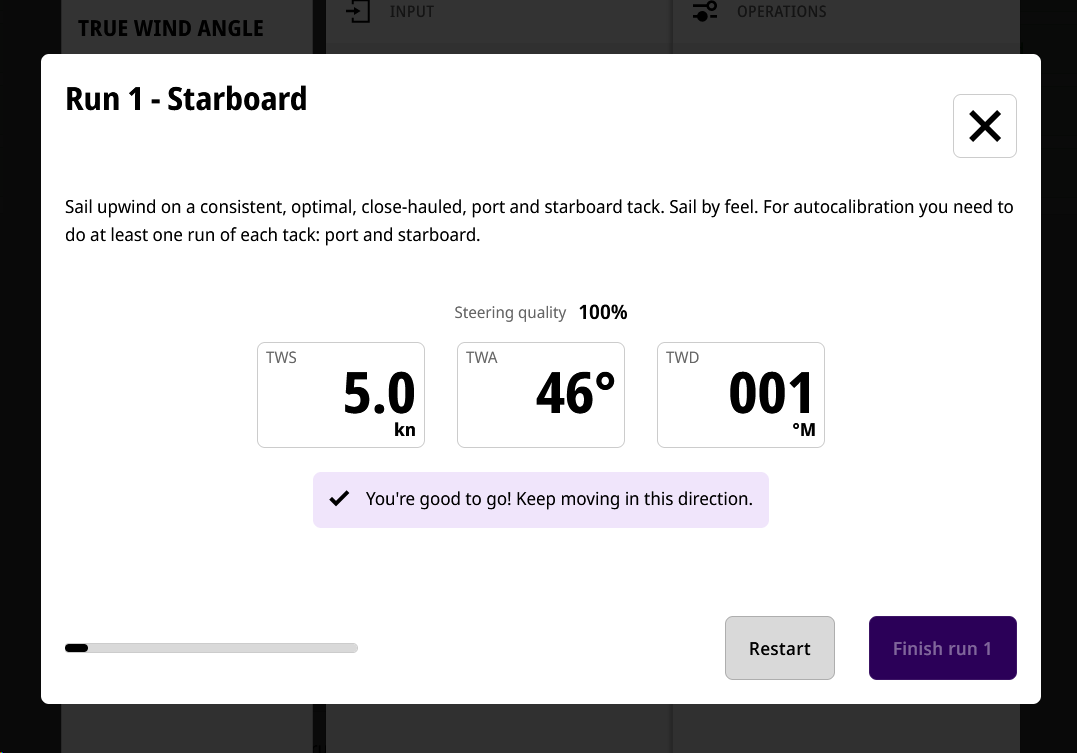
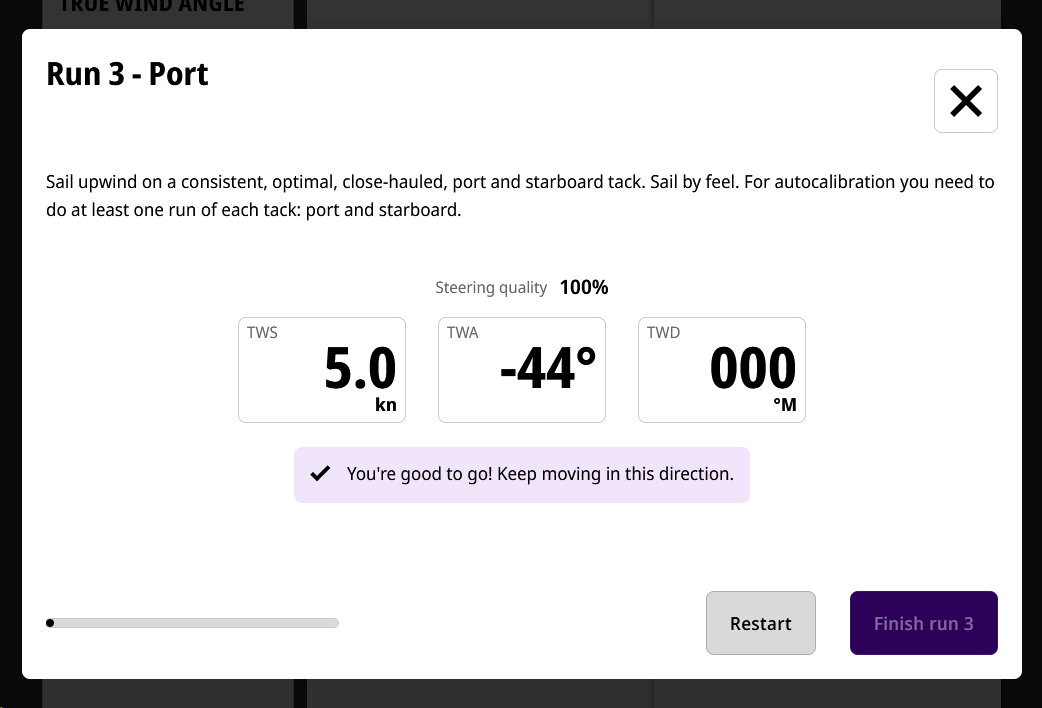
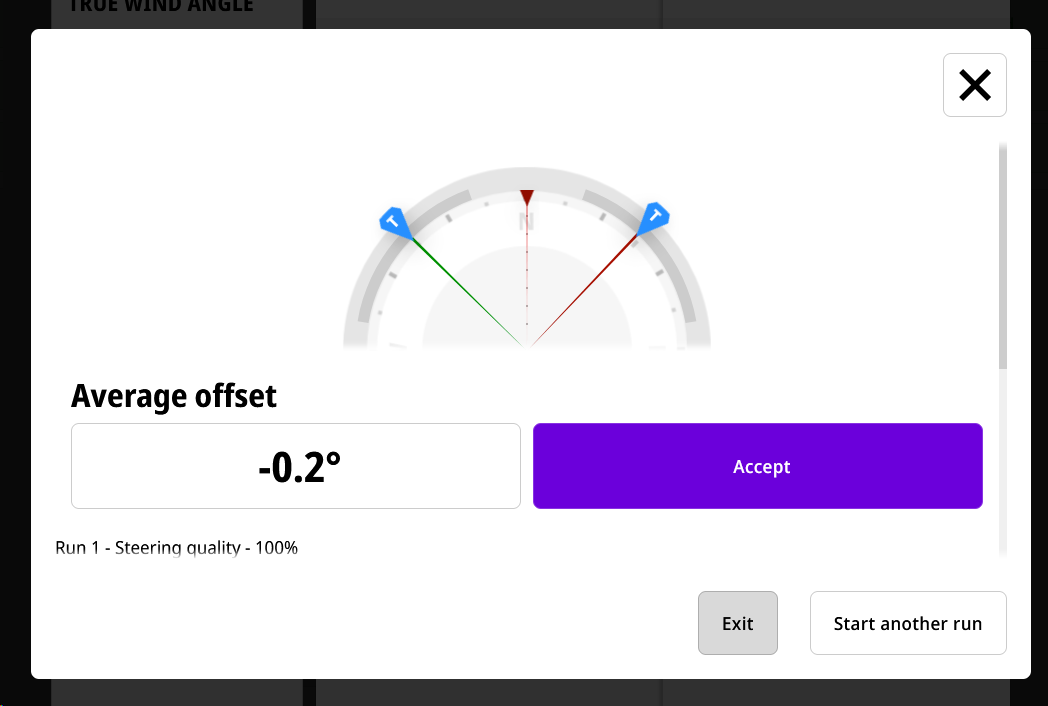
Compass Calibration
B&G Heading sensors are calibrated by turning the boat in circles. Triton Edge doesn’t change this, but offers a useful and intuitive graphic that helps you keep the boat turning at the correct rate to ensure accurate compass calibration.
With these four functions completed, you’ll be well on your way to having your boat’s instruments calibrated accurately, before moving on to some of the more advanced calibration tables, which we’ll cover in a future blog post.
